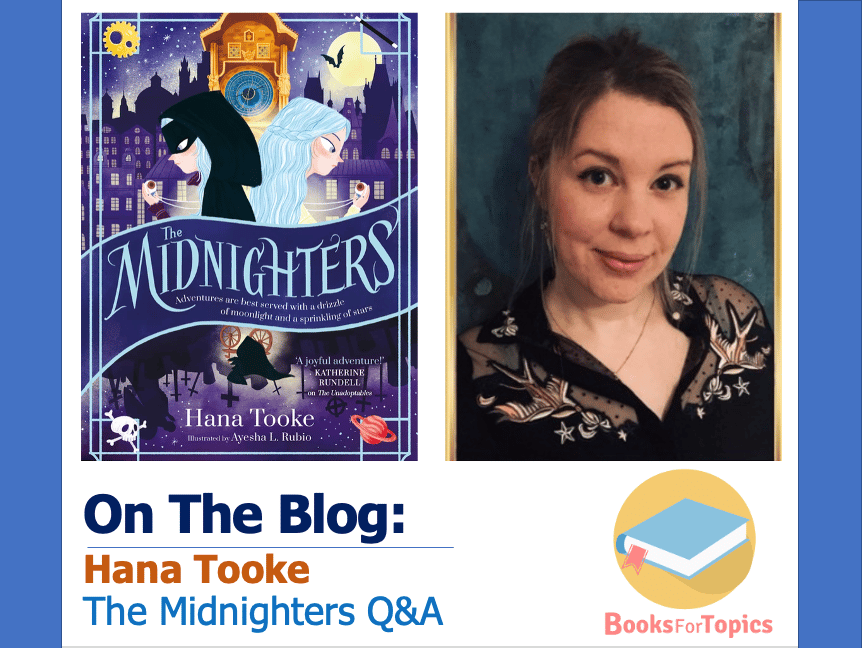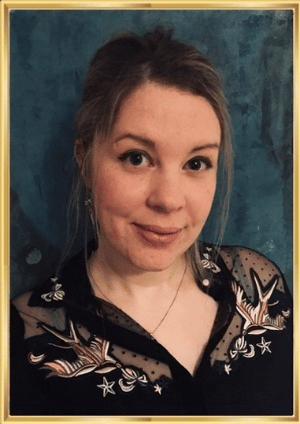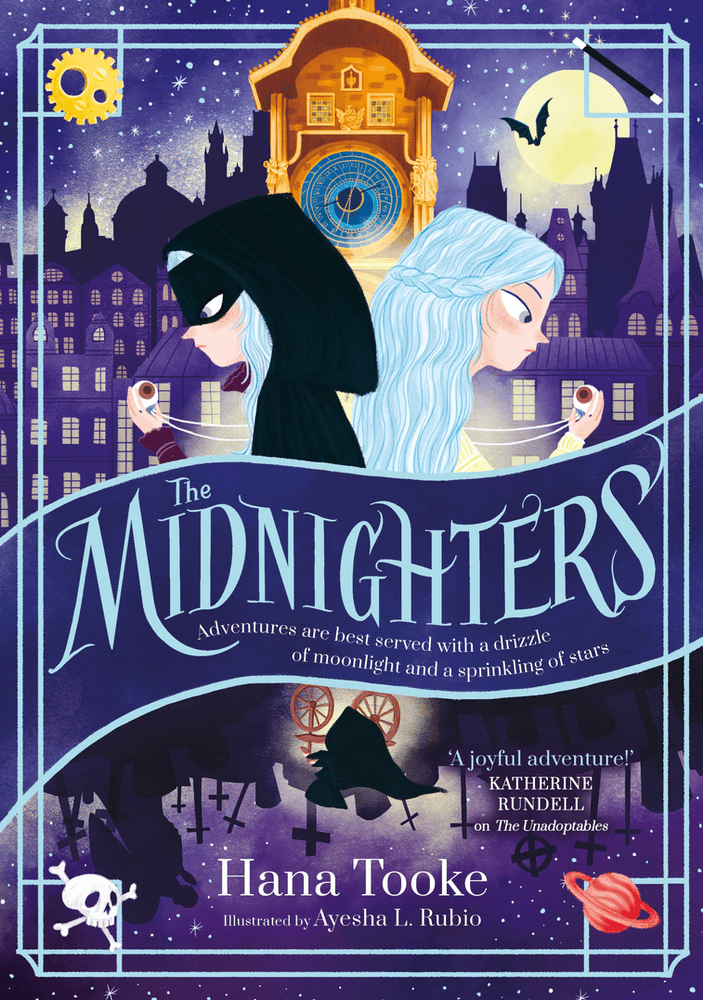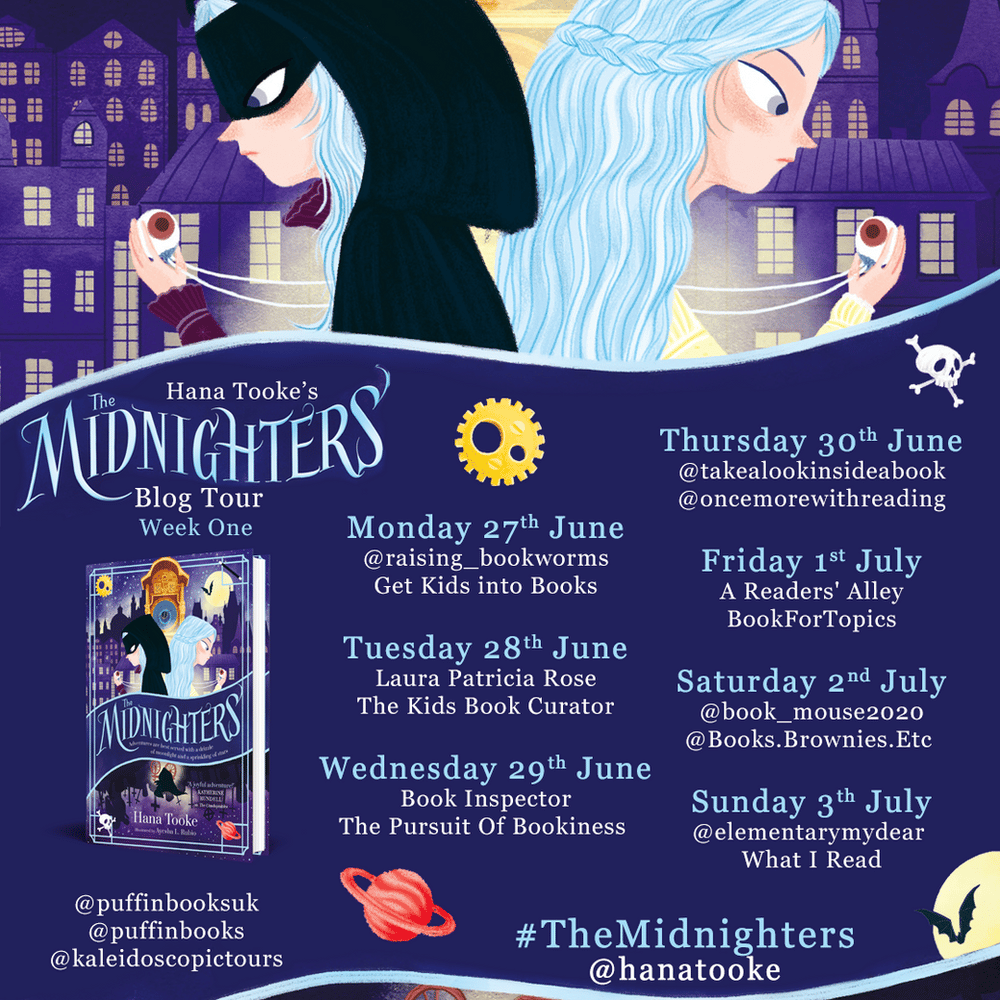From the bestselling author of The Unadoptables comes a stunning new story about a missing friend, a gothic city, and a secret society full of wonder, invention and maybe a hint of magic…
Author Hana Tooke stopped by our blog this week to answer questions about her new story, The Midnighters. Read on for our Review Panel’s thoughts on the book and our Q&A with Hana…

Review
Book Title: The Midnighters (available here)
Author: Hana Tooke & Ayesha L. Rubio
Publisher: Puffin Books
Publication Date: June 2022
Most Suitable for: Upper KS2
Set in Prague in the late eighteen hundreds, this magical tale will whisk you away into an underground world of mystery, intrigue and spectacular sights.
Ema is cursed – or so she believes. Born at twelve midnight on the twelfth day of the twelfth month: she is the twelfth child in a family of scientists. Scientists who work logically and systematically to prove theories in anthropology, zoology and meteorology. Ema, however, does not fit neatly into the role of a traditional scientist. Her talents and future do not lay in geology, as her parents had hoped, but in her own unique abilities which include: spotting lies; itching when disaster is going to occur; not being seen unless she wants to and a way of reading people’s shadows. All of these routinely terrify her. Unfortunately, the scientific community does not recognise Ema’s theories as true science and, at the age of twelve, she is declined entry to the famous school attended by each one of her siblings.
Feeling like a failure, Ema is shipped off to her uncle’s house whilst her parents are on a research trip. In this new neighbourhood, she quickly becomes friends with a girl whom she first notices hanging upside down trying to make friends with bats. Sylvie is strange and exotic; she immediately begins to take Ema on midnight missions designed to help her face her many fears and explore her talents. Then Sylvie goes missing…
Ema is a determined character and the story is full of magic, mystery and rivalry. Readers who enjoyed Amari and the Night Brothers or the Nevermoor series will enjoy the tension in the plot over whether Ema’s strange talents will finally prove useful and whether she will be able to save her friend before it is too late.
Reviewer: Louise Buisson
Order The Midnighters online from Amazon or Bookshop.
—————-
Q&A
with Hana Tooke, author of The Midnighters

When writing The Midnighters, what came first – the story, the characters, or the setting? Or all or none of these?
With The Midnighters, all those three things came together at once. Ema actually appears first in my first novel, The Unadoptables, under the name Emiliana. She wears an eyeball necklace and proclaims to be a spiritualist from Bohemia when she helps Milou find Egbert. I only ever intended for her to be a small side character in that story, but – long after I’d finished that book – Ema wouldn’t leave my mind. I knew her name wasn’t really Emiliana, that there was more to her spiritualist skills than met the eye(ball), and that probably wasn’t a pure coincidence that she was there to help Milou when she needed it. I felt it in my very bones, if you will. And so I knew I had to explore her story.
When you set out to write a book, do you always know what’s going to happen before you start, or does the story unfold for you as you write it?
I can’t start writing until I have some very vivid snippets of the story. With The Midnighters, I had Ema and her eyeball necklace, I knew it would be set in Prague, and I also had images of ballrooms, birdcages, circuses, and bones. From that point, however, I try not to engineer the story in the direction I think it will go. Although I love to make the plot feel large, magical, and mysterious, ultimately, my stories are very character-driven. I’ve learned that I need to follow, not lead, my characters and let them surprise me with how they respond to the (often absurd) situations I drop them in.
It is often said ‘write what you know’ – is this true for you?
When I first started writing, I very much tried to avoid this. My childhood was magical in many ways, but I also went through a lot of physical and emotional trauma. This left me wanting to avoid thinking about those times at all costs. My first attempts at writing stories were very emotionally distant… and flat.
It was my classmates on the Bath Spa writing course that encouraged me – through their own very personal work – to give more of myself to my own writing. The Unadoptables – which had five characters that each had something similar to my childhood ‘peculiarities’ – came pouring out the moment I decided to do this. With Ema in The Midnighters, I think I’ve taken that a step further… which I found difficult, but ultimately very cathartic too.
When it comes to coming of age, ‘what I know’ seems to be finding unique ways to navigate a world that, at times, seems impossibly set up to do so. If that helps readers feel like they can embrace their so-called peculiarities and find magic in the darkness, then I’m happy to keep trying to give more of my own journey to self-acceptance.

Since you’ve been writing, have you learnt anything that’s surprised you about yourself?
It was writing Ema that made me realise just how much I was putting myself into these stories. Her quest to solve the Ema enigma made me address my life-long quest to solve the Hana enigma. At one point she says ‘how am I supposed to understand a world, that doesn’t seem to understand me’ – that’s very much how I’ve always felt and writing that sentence really brought that home.
The pandemic also made masking my difficulties almost impossible. I was encouraged to finally seek out a diagnosis for ADHD and Autism. I now have the ADHD diagnosis and I’m waiting for further ‘unpicking’ to determine if I have Autism too. I’ve found this process incredibly overwhelming at times. It’s made me realise I have been carrying around 35 years’ worth of confusion and shame about why my brain seems to work differently to other people’s, and now I’m working to reframe this new information about why I am the way I am. Information that Ema, in the 1800s, would never have been able to get. It has been a huge relief, personally, to start getting some answers. Writing these characters have given me a great deal more than just a career in writing.
And has this changed the way your write, or what you write about?
Absolutely. I now see ‘writing what you know’ as something hugely powerful, rather than something terrifying to avoid at all costs. I think it’s probably impossible to write a good story without offering up part of yourself.
What’s next?
Once again, my next story has come to me in small, but very vivid snippets: an eccentric manor house with a huge brick wall running down the middle of it, crows and ravens in a crumbling chapel, a 100-year mystery to solve, and two main characters who start off as bitter enemies.
I want to explore anger and resentment – something we all experience at some point, whether we’ve already come of age or not. I think it’s particularly easy to feel these things when it seems the world is against you. I know I’ve certainly clung to these emotions and realised later how unhelpful that was. That said, the story will be balanced out with lots of light-hearted adventure, mischief, and mayhem!
———————

Order The Midnighters online from Amazon or Bookshop.
Many thanks to Hana for swinging by! Follow along with the other stops on the blog tour for more about the book.
———————
Where next?
> Visit our Reading for Pleasure Hub
> Browse our Topic Booklists
> View our printable year group booklists.
> See our Books of the Month.








